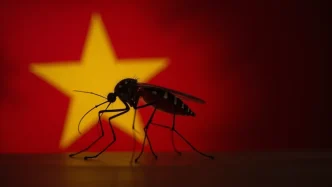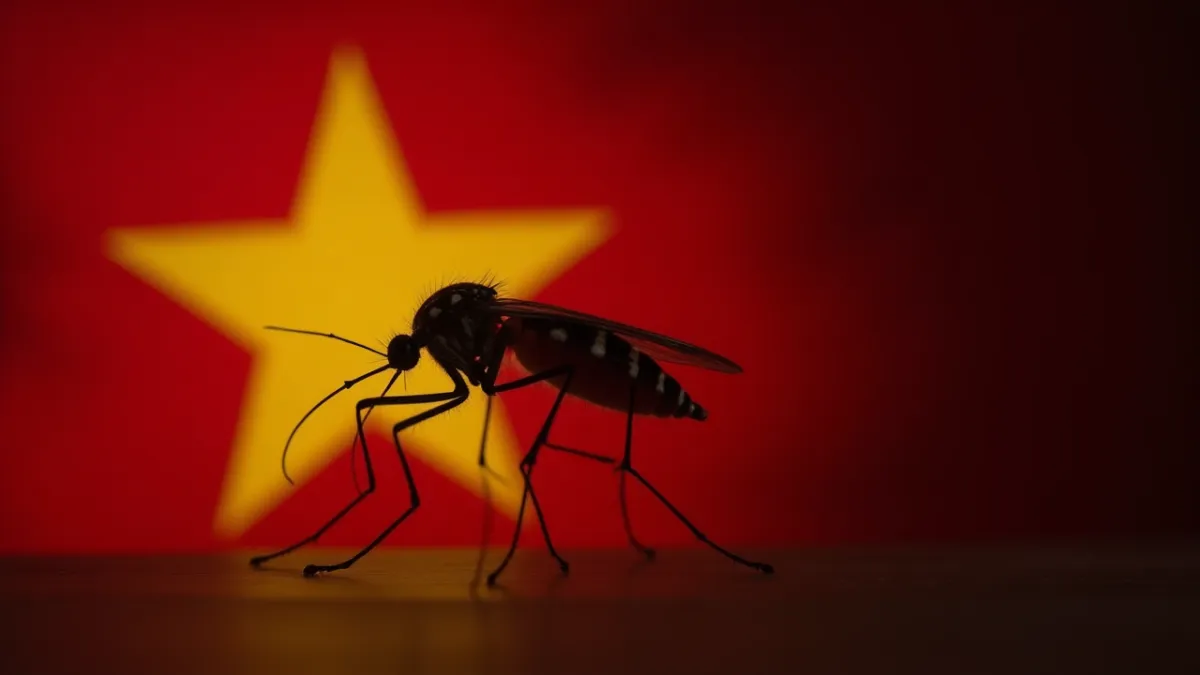Ho Chi Minh City, Vietnam’s bustling economic hub, is grappling with a deadly surge in dengue fever cases as the rainy season fuels a sharp rise in mosquito populations. Health authorities have reported six deaths and a staggering 14,370 infections this year, marking a 153 percent increase compared to the same period in 2024. With over 838 new cases recorded in the past week alone, the city is on high alert as it enters the peak transmission period.
A Deadly Spike in Infections
The Ho Chi Minh City Centre for Disease Control (HCDC) has issued urgent warnings as the city faces an unprecedented wave of dengue fever, a mosquito-borne viral infection that can be fatal if not treated promptly. The majority of cases—over 11,000—have been concentrated in the city’s central districts, with significant numbers also reported in the recently merged areas of Bình Dương (nearly 2,500 cases) and Bà Rịa–Vũng Tàu (862 cases). Two of the recent deaths occurred in Bình Dương, and one in Bà Rịa–Vũng Tàu, underscoring the widespread impact of the outbreak across the expanded municipal boundaries.
The timing of the surge aligns with historical patterns. From 2019 to 2022, large dengue outbreaks consistently struck between mid-June and August, driven by the wet conditions of Vietnam’s rainy season. Health officials fear a repeat of those devastating waves without immediate and aggressive intervention. The current environment, characterized by waterlogged areas and standing water, provides ideal breeding grounds for Aedes aegypti mosquitoes, the primary vectors of the dengue virus.
“This is a critical time. Without aggressive control of mosquito breeding sites, we could face a serious surge in hospitalisations, especially among children” stated the HCDC in a public advisory. Children and the elderly are particularly vulnerable to severe complications from dengue, which can include high fever, severe headaches, joint pain, and, in extreme cases, hemorrhagic fever leading to internal bleeding and organ failure.
Rainy Season: A Breeding Ground for Danger
The onset of the rainy season, which typically spans from May to November in southern Vietnam, has exacerbated the public health crisis. Persistent rainfall creates countless small pools of stagnant water in urban and suburban areas—perfect habitats for mosquito larvae. Unsealed water containers, clogged drains, and even discarded items like tires or plastic bottles can become breeding sites if not properly managed. In a densely populated city like Ho Chi Minh, where informal settlements and rapid urbanization often outpace infrastructure improvements, controlling these environmental factors is a monumental challenge.
Health experts note that the rapid increase in cases this year may also be linked to broader climatic trends, including warmer temperatures and erratic rainfall patterns, which extend the breeding window for mosquitoes. While Vietnam has faced dengue outbreaks for decades, the scale of the current surge—153 percent higher than last year—has raised alarms about the city’s preparedness and the resilience of its public health systems in the face of such spikes.
Emergency Measures and Public Response
In response to the escalating crisis, Ho Chi Minh City authorities have rolled out a series of emergency measures aimed at curbing the outbreak. Larvicide spraying campaigns are being intensified in high-risk neighborhoods, targeting areas with reported clusters of cases. Public education initiatives are also underway, urging residents to take proactive steps to eliminate mosquito breeding sites around their homes and communities.
Among the key recommendations are the removal of standing water, regular cleaning of water containers, and the use of guppies—small fish that eat mosquito larvae—in ornamental ponds. Residents are further advised to use insect repellents, sleep under bed nets, and employ mosquito sprays or electronic swatters to reduce exposure. The city has also promoted its Online Healthcare app as a tool for citizens to report potential breeding sites, fostering a community-driven approach to outbreak control.
Authorities are calling for public cooperation, particularly in allowing fumigation teams access to private properties for spraying. Compliance, however, remains a challenge in some areas due to skepticism about chemical treatments or logistical barriers in densely packed urban zones. Health officials have emphasized that early diagnosis is critical, urging anyone with symptoms such as high fever, nausea, or severe fatigue to seek medical attention immediately rather than relying on self-treatment at home.
Challenges in Urban Containment
Containing dengue in a metropolis of over 9 million people presents unique difficulties. Ho Chi Minh City’s rapid growth has led to overcrowded living conditions in many districts, where sanitation and waste management often lag behind population increases. Informal settlements, known locally as slum areas are particularly vulnerable, as access to clean water and proper drainage systems is limited, creating persistent mosquito habitats.
Moreover, the city’s role as a commercial and transit hub means that infected individuals can inadvertently spread the virus to other regions. Health authorities are monitoring movement patterns to prevent wider outbreaks, but the interconnected nature of Vietnam’s southern provinces complicates containment efforts. The integration of former areas like Bình Dương and Bà Rịa–Vũng Tàu into Ho Chi Minh City’s administrative boundaries has also stretched public health resources, as these regions bring their own unique demographic and environmental challenges to the table.
A Call for Vigilance and Collective Action
The dengue crisis in Ho Chi Minh City serves as a stark reminder of the fragility of urban health systems when faced with environmental and climatic pressures. While the city has made strides in past years to improve mosquito control and public awareness, the current outbreak highlights gaps that still need to be addressed. The HCDC continues to monitor the situation closely, with daily updates on case numbers and targeted interventions in the hardest-hit areas.
For now, the burden of prevention falls heavily on residents. Simple actions—emptying a bucket of water, covering a storage tank, or reporting a clogged drain—can make a significant difference in reducing mosquito populations. Yet, without sustained cooperation between the public and local authorities, the risk of further deaths looms large.
As the rainy season progresses, the question remains whether Ho Chi Minh City can stem the tide of infections before hospitals are overwhelmed. The coming weeks will be critical in determining whether this outbreak can be contained or if it will spiral into a larger public health emergency.















